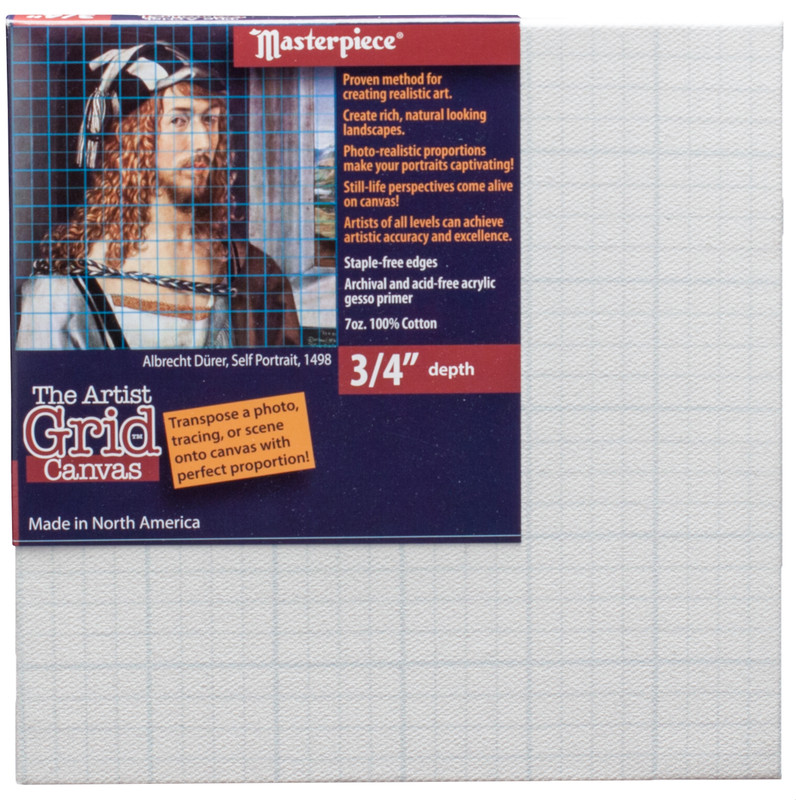Description
4x4 GRID Canvas 3/4" Deep #GRD-0404
Buy a 4-pack and save cost and shipping!

Grid™ Canvas is a unique product that has a grid actually printed on the canvas itself. The grids are 1"x1" with additional 1/4" lighter weight lines, very similar to graph paper. The 100% cotton canvas is 3/4" deep canvas and is stretched using our MasterWrap™ back-stapled method with tailored corners. Our proprietary stretching products uses pneumatically controlled machines that yield drum-tight tension.
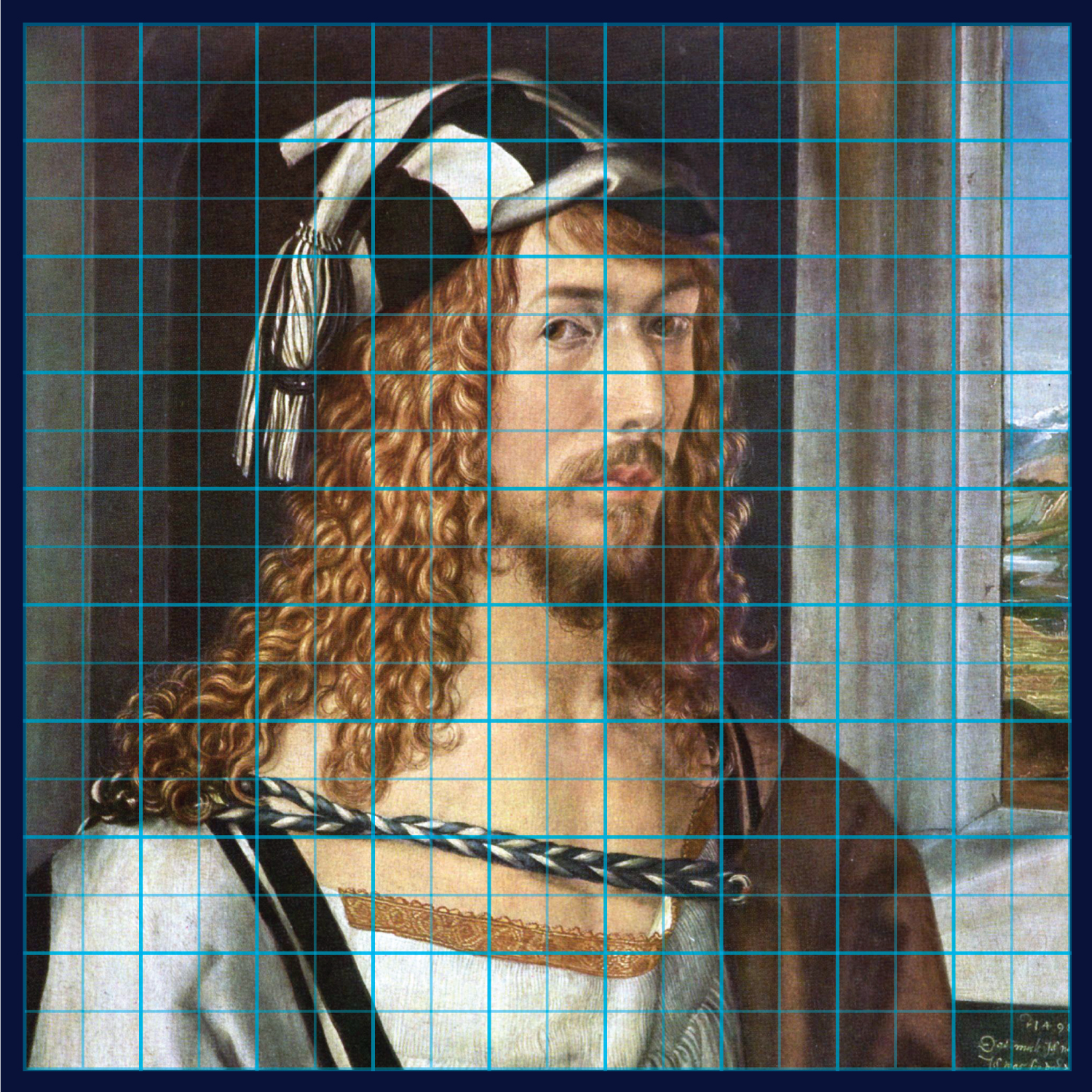
Transpose a Photo, Image, Tracing, or an actual scene onto Canvas
As demonstrated by this 1498 self portrait of Albrecht Dürer, himself, the grid process is a proven method for creating realistic art from a photograph, or from an actual scene through a "gridded" glass. Grid™ makes it easier to achieve actual life-like proportions that make your portraits captivating. Still-life perspectives come alive on canvas. Artists of all levels can achieve artistic accuracy and excellence using this method.
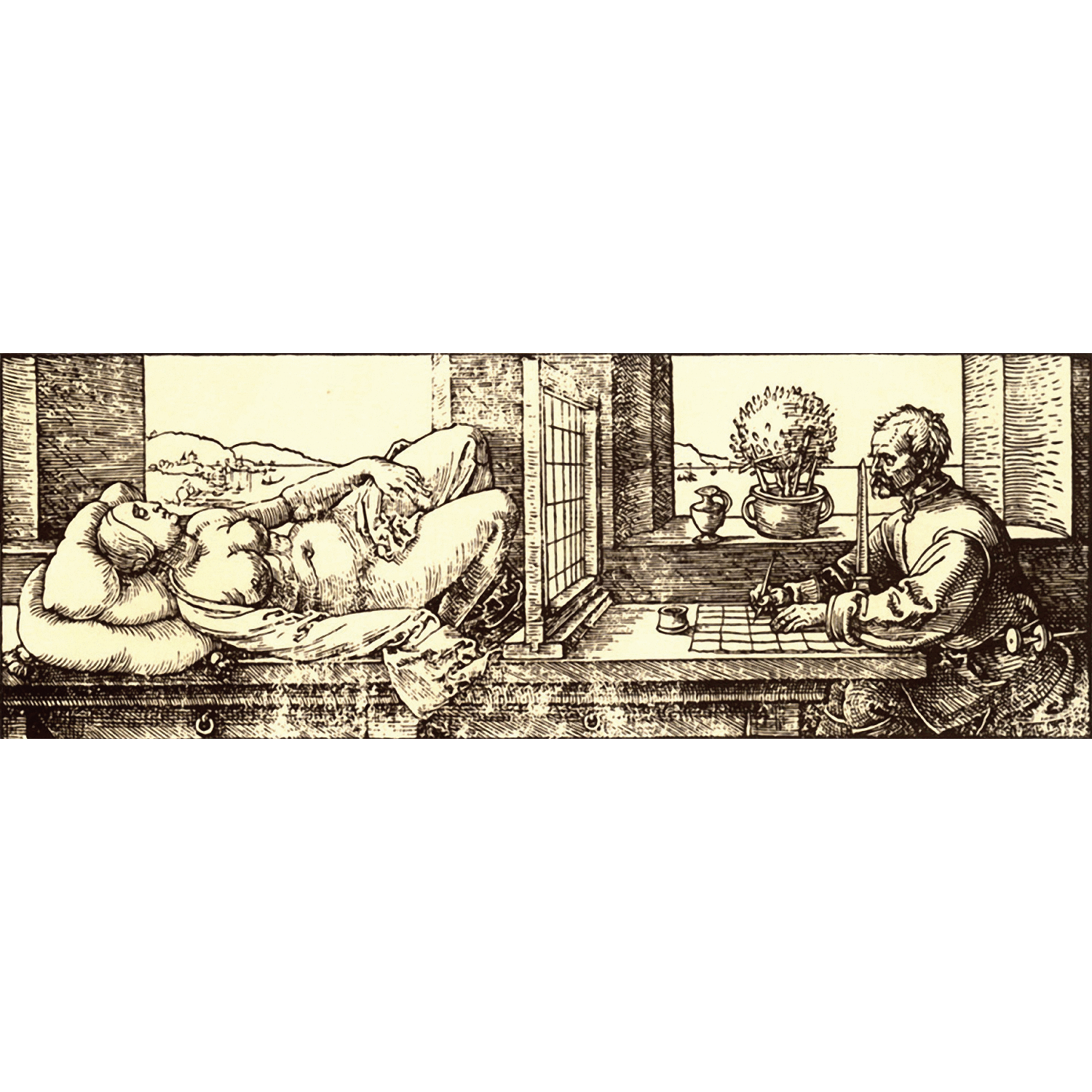
Transpose a Scene Directly onto Canvas
This famous 1506 drawing by German artist, Albrecht Dürer, demonstrates the grid transfer process. The drawing is called the "Draughtsman's Net," because he used a glass encased in a wooden frame and black threads to create his grid pattern on the glass. The artist looks through the glass and outlines the subject and that can be transferred to the gridded canvas.
The graphic shows Dürer's entire drawing and zooms-in on the left and right sides to provide a better glimpse of how the grid process. It is a very efficient method for drawing and tracing your main lines with a high degree of accuracy and takes away most of the guesswork when generating your proportions.
You can look-up on-line more about this process and find more drawings, as Dürer himself wrote a book called, "Treatise of Measurement" after having traveled to Italy and becoming totally immersed in Italian Renaissance art theory.

Transpose a Scene Indirectly onto Canvas
Using the gridded glass described above, trace-out your scene on the other side of the same gridded glass, and then use that as your "tracing" to transpose onto the canvas. The grid on the glass corresponds to the grid printed on the canvas.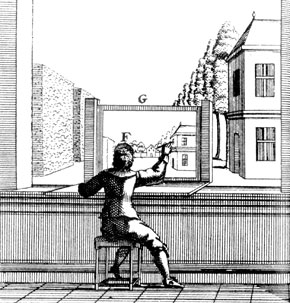
Enlarge or Reduce your Painted Image
To enlarge your image, draw smaller than a 1" x 1" grid pattern directly onto your image, glass, or plastic sheet. Then correspond the grid on the image with the heavy bordered 1" x 1" squares on the canvas.
To reduce the size of your image, draw a grid larger than 1" x 1" squares on the glass. This works even if you are transposing your image directly or indirectly, as discussed above.
You can literally trace-out exactly what you see on the "gridded" glass. That grid will correspond to the grid on the canvas and you can thereby transpose a scene with unbelievable proportional accuracy.
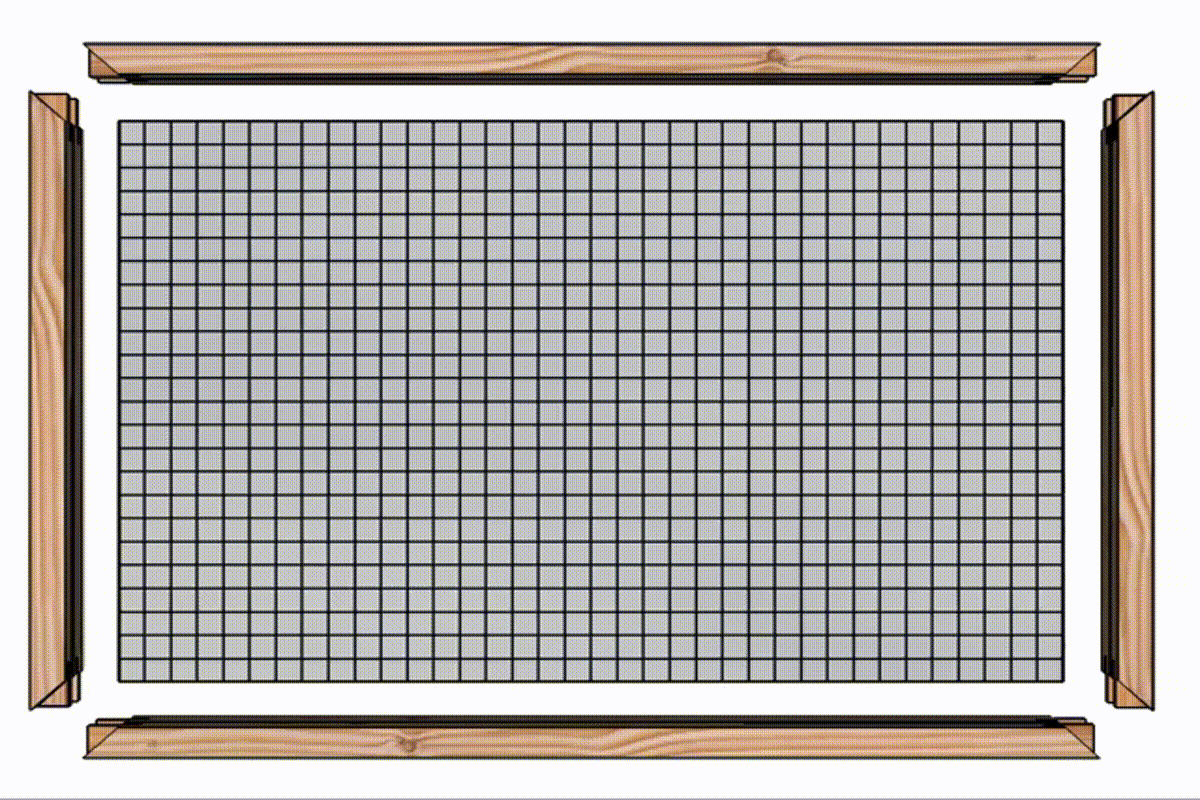
Build Your Own Draughtman's Net
You could easily construct your own Draughtman's Net, as depicted above, any size you want. Simply buy a piece of glass from your local hardware store, which is quite economical. We make K2™ Stretcher Bars, which are ideal for this task because they have an 1/4" interior groove that will contain the glass, and they are 2.5" deep, so the device will stand on it's edge.
For example, if you buy a glass that is say 24x36 in size, then you could buy two 26 Inch and two 38 Inch K2™ Stretcher Bars that would make a 26x38 frame. Because the frame has an interior groove, the glass will be completely contained by the Stretcher Frame, and you would have effectively constructed a similar device as Albrecht Dürer. And with a dry or wet erase marker you can draw a grid pattern on the glass. You can use your Draughtman's Net as the view-finder, described above, to trace your subject on the glass, and then transfer that image to your corresponding a Grid™ canvas.
True 1:1 Square Proportion - 4x4 Size
4x4 is a popular small size square size.
The square is perhaps the most intriguing proportion, as it is root of all of the other proportions. It is commonly used in both photography and art. Squares are typically used as the center canvas of a triptych or as a single canvas hung at a 45° angle. The square proportion is long used with medium format professional cameras, and most photographs we see on websites and social media are based on square images. Since all sides of the canvas are the same length, your eye is drawn evenly across the surface of the painting creating a sense of harmony, balance, and a generally a pleasing visual experience. The square format is also a good choice for artists who focus on geometric shapes or patterns in their work, as the regularity of the square shape can help reinforce these elements. Some artists enjoy the challenge of working within the confines of a square format, as it forces them to think creatively resulting in intriguing compositions.
Check-out one of these other sizes in the same 1:1 aspect ratio:
Explore Related Products to this 4x4 Size:
- Other Styles: Classic Cotton™ • Vincent Pro™
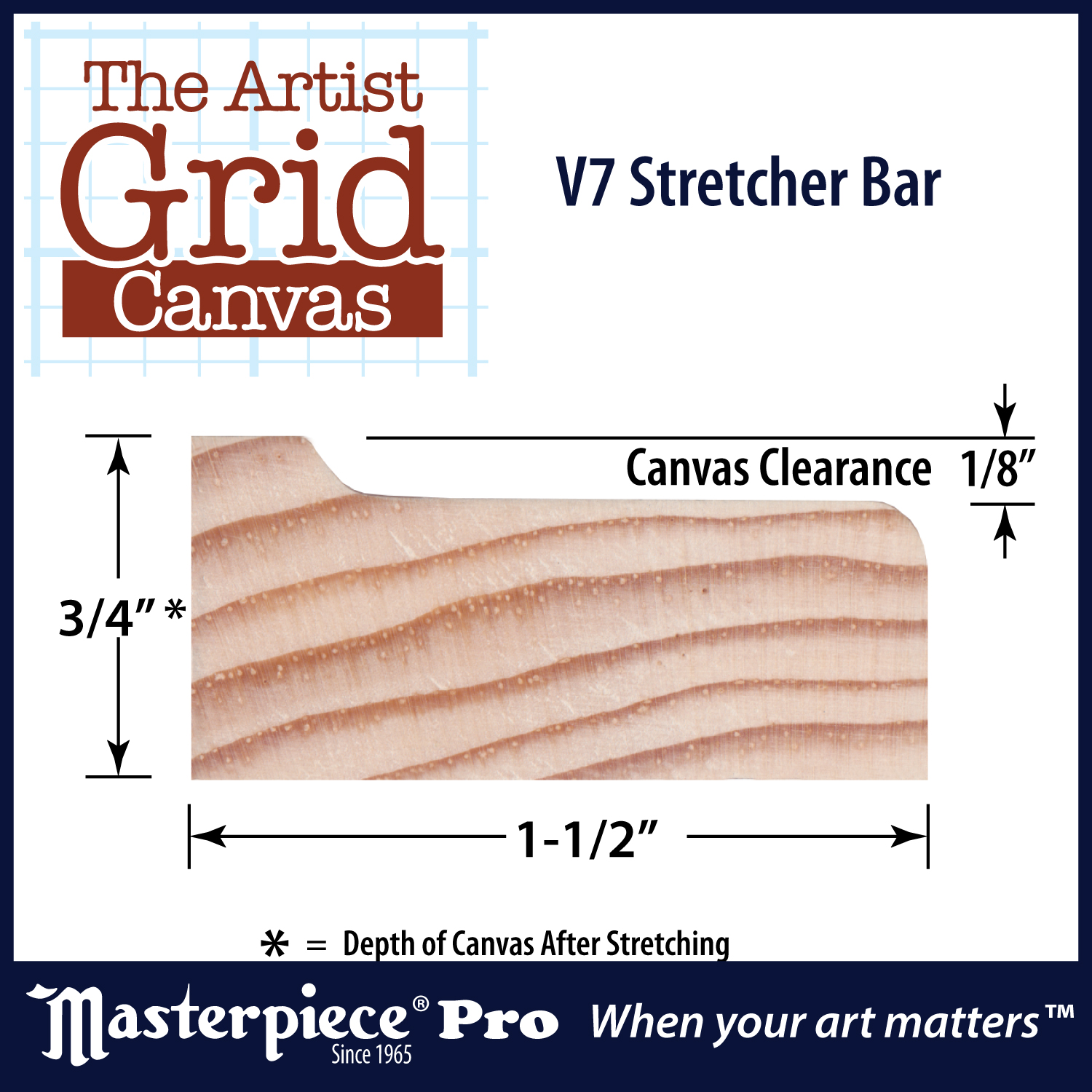
Masterpiece Grid™ 3/4" Deep Bar • 1/8" Canvas Clearance
Canvas Clearance is the space between the Bar and the canvas. Generally speaking, more clearance reduces the risk of the canvas touching the wood and creating unsightly lines during painting. Our design provides maximum possible 1/8" clearance for a 3/4"deep profile Stretcher Bar so as not to impact your painting, but still leaving enough wood to the maximize strength of the frame.
- Stretcher Bar Profile produces a 3/4" deep stretched canvas
- 1-1/2" wide Stretcher Bar
- Solid Ponderosa Pine or Fir from the Pacific Northwest
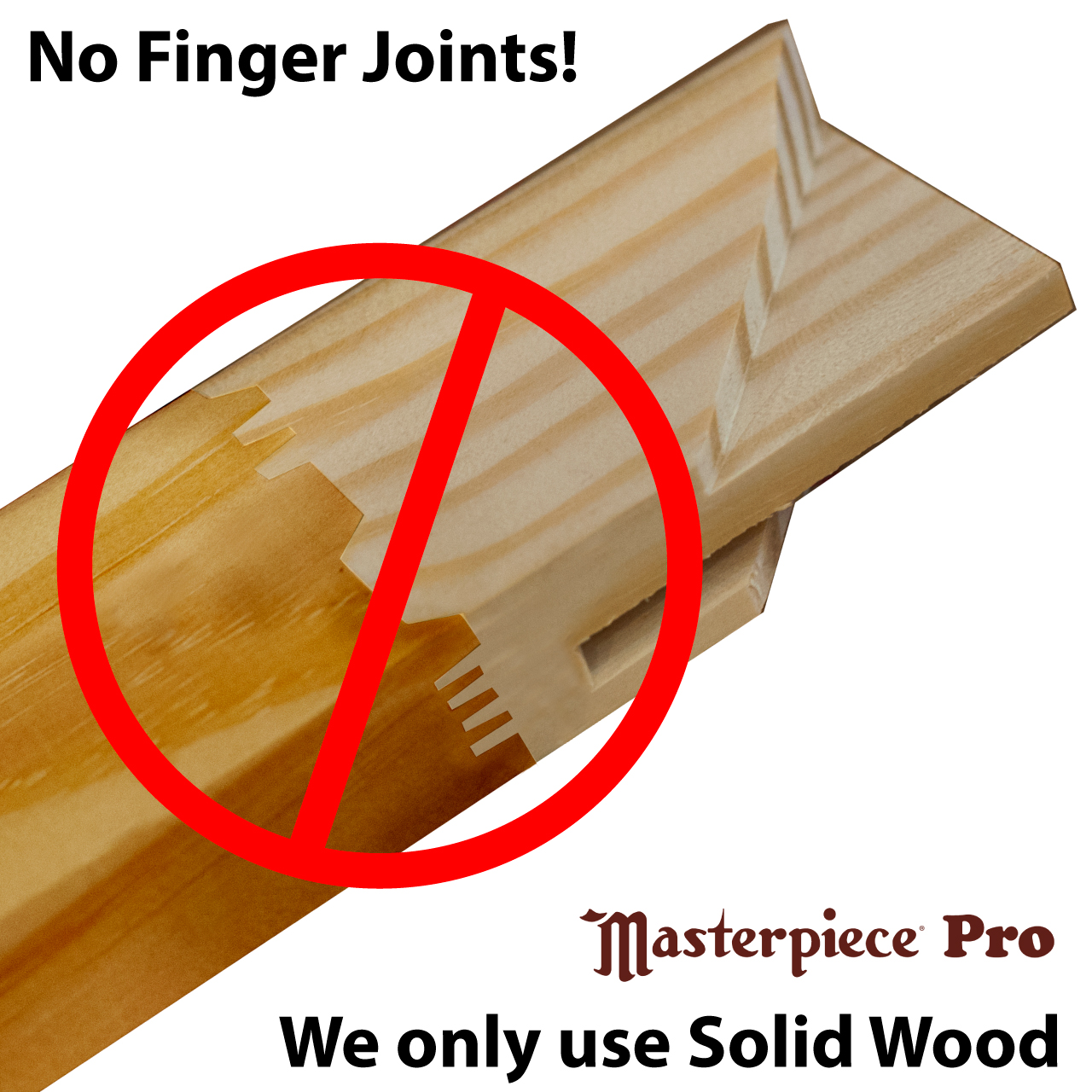
Finger Jointed Wood is not meant for Stretcher Bars
Solid wood makes the most dependable Stretcher Bar, because one homogeneous wood member is going to behave similarly across the entire length of the Bar. Whereas, with finger-jointed wood is made-up of multiple pieces of wood, sometimes on the actual joint itself, presenting multiple points of failure which no one can control.
We only use Solid Wood to build our Stretcher Bars because a solid piece of wood will last indefinitely. When we speak of archival value, it's not just the paint you use and the quality of your canvas and ground, even the wood choices manufacturers add or reduce value to your final painting. The fact is, you don't want problems, and finger joints only increase that risk of the wood falling apart in the future.
The glue used to bind finger joints is a water based adhesive and when that wood is exposed to high humidity environments, particularly with exterior walls, the glue joints can give-up. As a manufacturer, Masterpiece® does its part to conserve as much wood as possible, and still provide a quality product that will out-perform any other in the marketplace.

Sustainability is about Reducing Deforestation
Choosing products made with sustainably sourced lumber is an important way for consumers to make a positive impact on the environment. By supporting sustainable forestry practices, we can help to reduce deforestation, promote biodiversity, and mitigate climate change. It's a simple and effective way to make a difference.
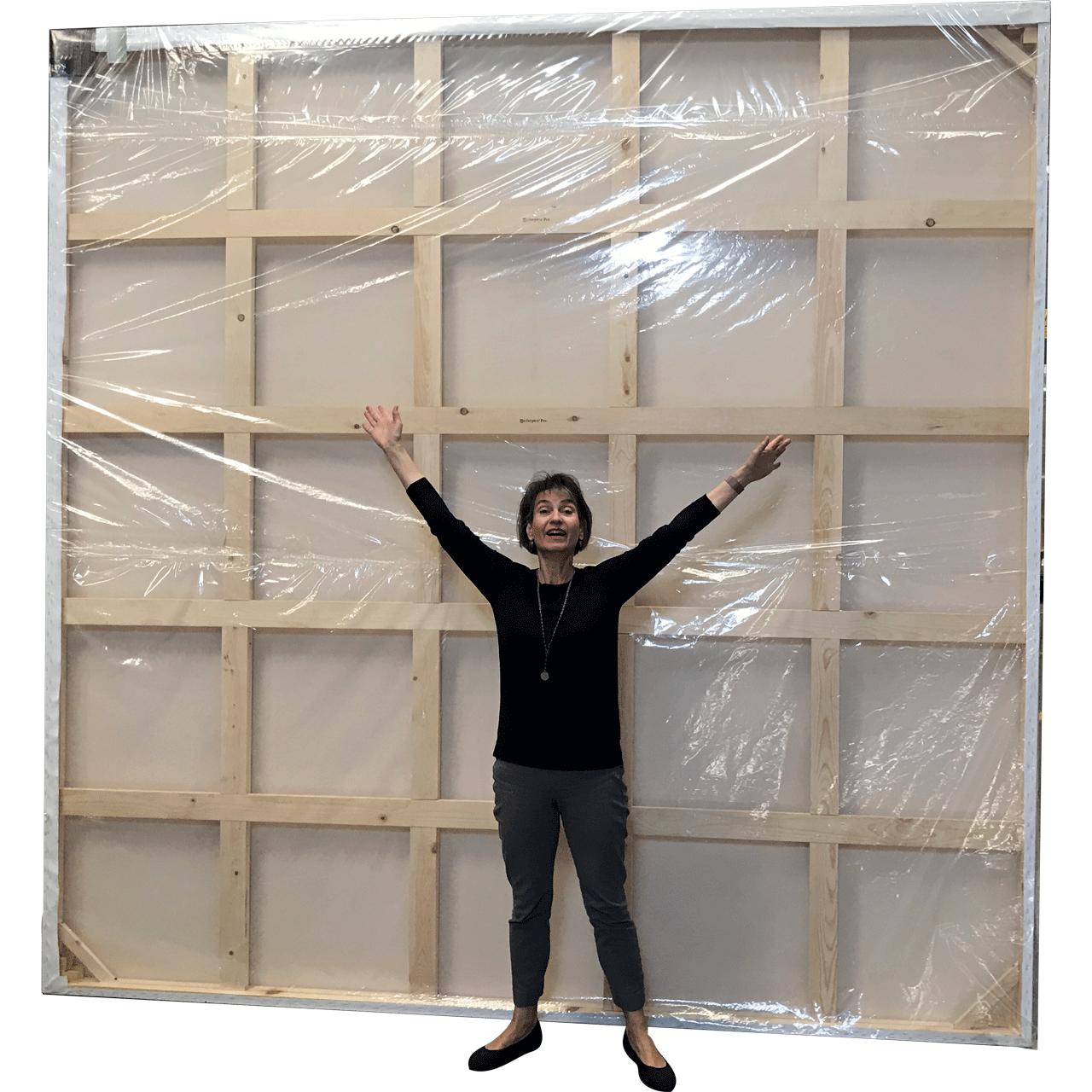
America's Custom Shop!
We offer two Masterpiece Classic depths (3/4" & 1-3/8"), as well as three canvas surfaces to choose from. There are dozens of standard sizes available for these products. If you don't find the size you want, our Masterpiece Vincent™ Pro canvases have 200+ sizes to choose from in over a dozen surfaces. And if you can't find what you want, just ask your local retailer or contact us, and we will help you with your next composition.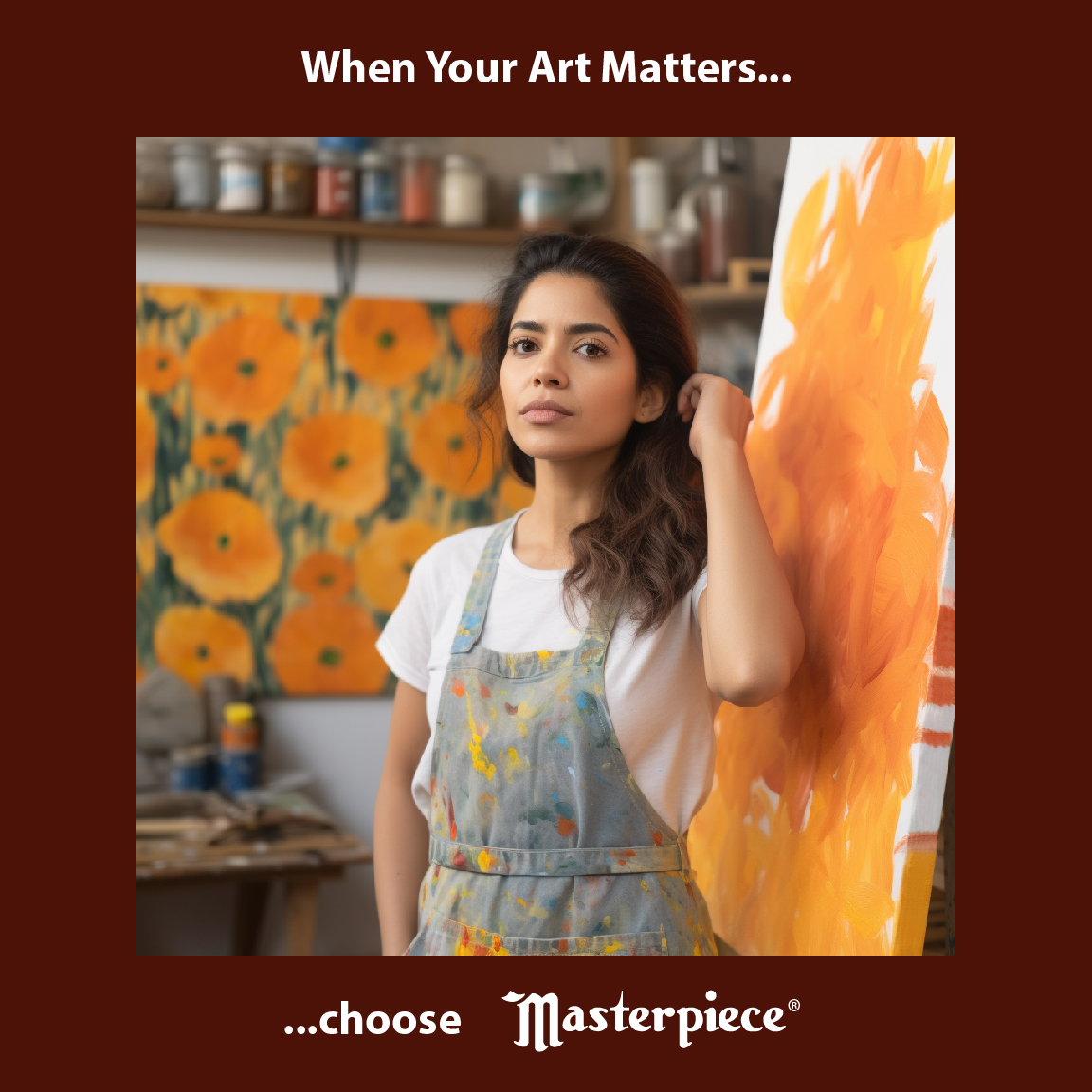
One of the most celebrated features about Grid™ canvases is the patently robust framing system that makes it possible to increase the tension in the middle of the canvas, where the tension is needed the most. Our well-made keyable bracing system supports the canvas indefinitely. Braces prevent the stretcher bar frame from bowing-in so the canvas stays tighter long-term.
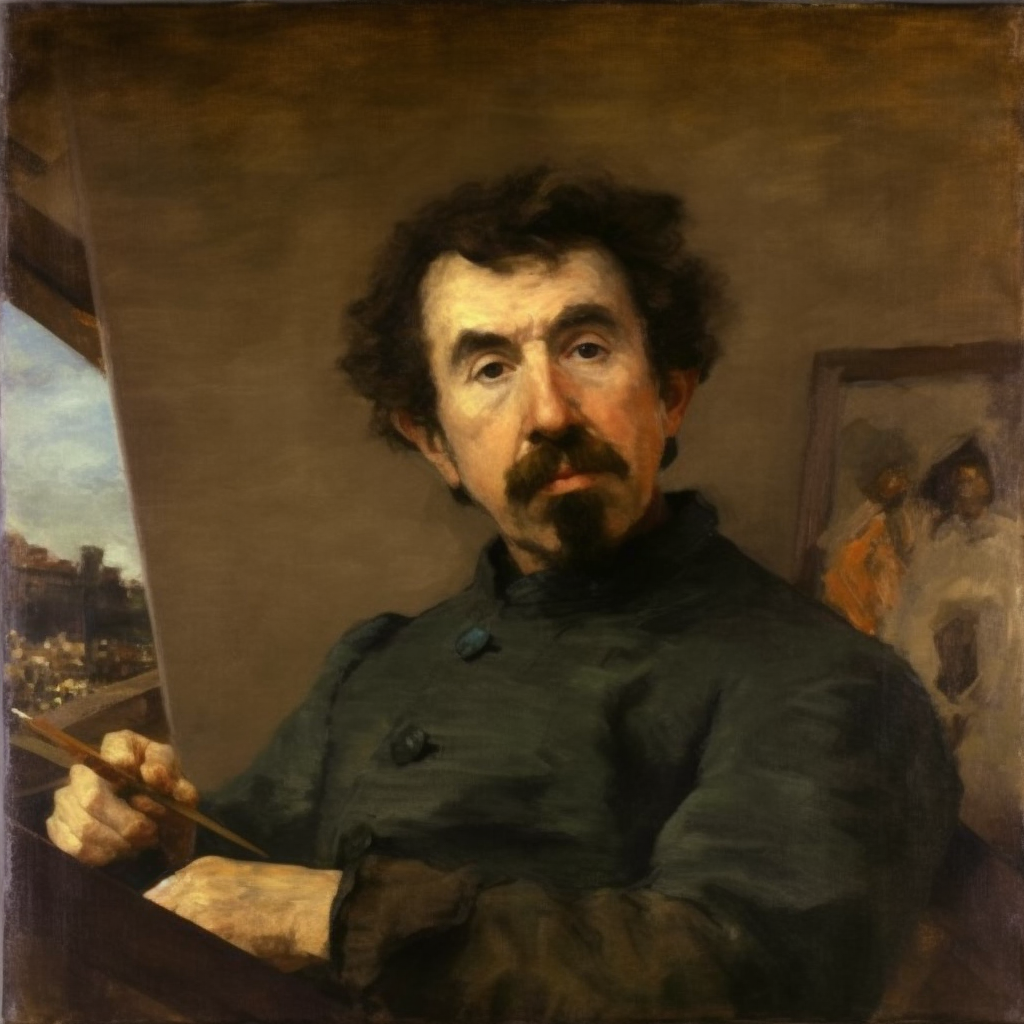
I maintain that two and two would continue to make four, in spite of the whine of the amateur for three, or the cry of the critic for five.
♦ James Whistler
James Whistler, a figure noted for his wit as much as for his innovative approach to art, never hesitated to defend his views, especially when they defied convention. In this witticism, Whistler humorously confronts the ever-present tension between the artist's vision and the external pressures exerted by both critics and novices. He underscores the unwavering commitment an artist must have to their truth and convictions.
For those of us in the art world, external opinions—whether from a well-meaning novice or a seasoned critic—can be a powerful force. It can sway decisions, mold perspectives, and sometimes, even obscure our original vision. Yet, as Whistler subtly suggests, there exists an objective truth, a foundational essence that remains untouched by fleeting opinions. Just as mathematical facts are indisputable, the core essence of one's artistic vision must be held with unwavering conviction.
Whistler's words provide a beacon for us, reinforcing the importance of trusting our instincts and beliefs. In a world full of voices, the challenge lies in filtering out the noise and staying true to one's path, ensuring that the core essence of our work remains untarnished and authentic.
To enhance your creative exploration of our site, we offer the insightful wisdom of James Whistler, our interpretation, and little one-of-a-kind portrait that we created. Now go paint!
Additional Details
- SKU:
- GRD-0404
- Canvas and Depth:
- 0.75 in. Grid Canvas
- Width:
- 4 Inch
- Length:
- 4 Inch
- Aspect Ratio:
- 1:1 Square

